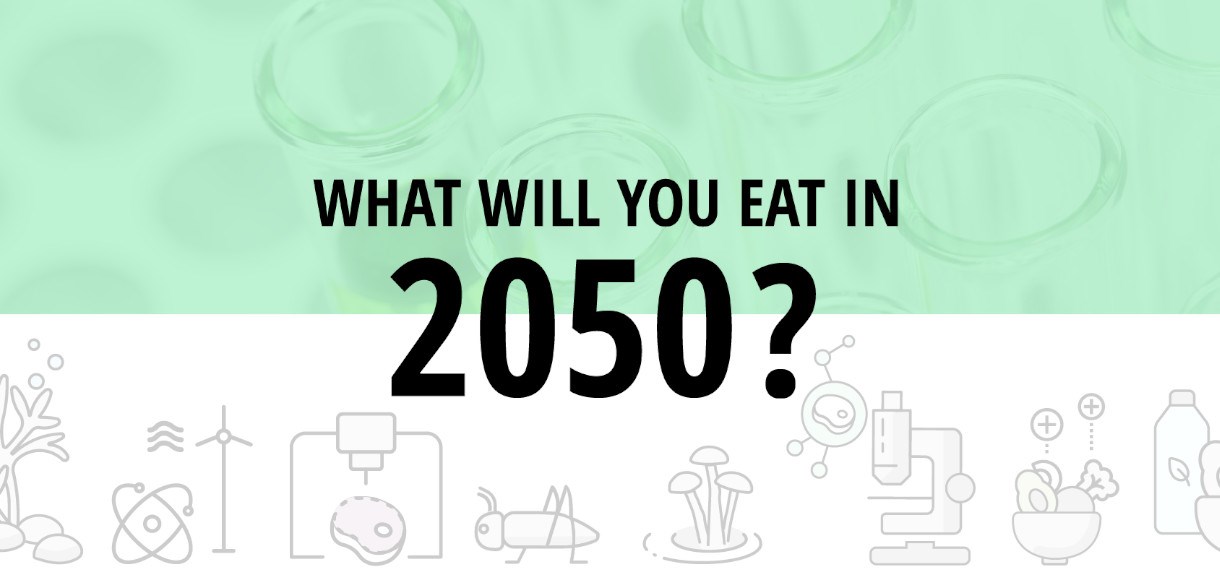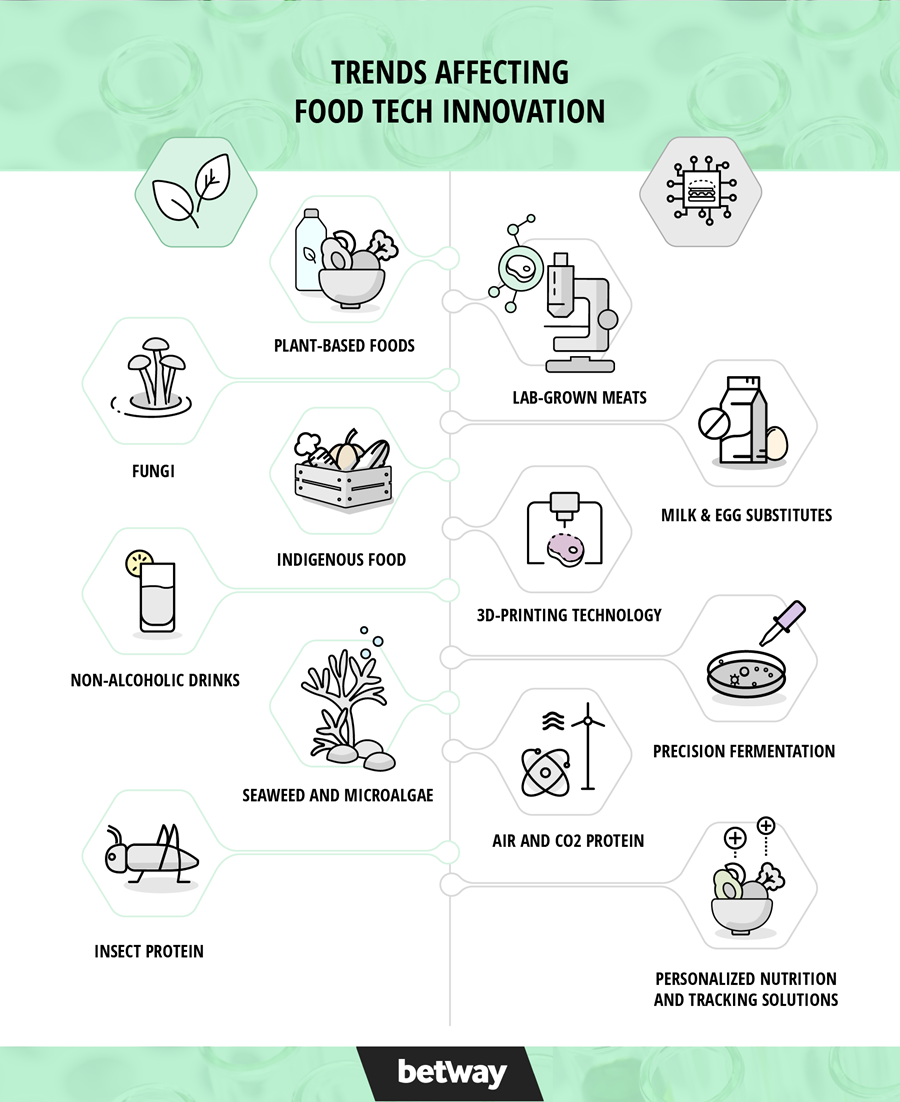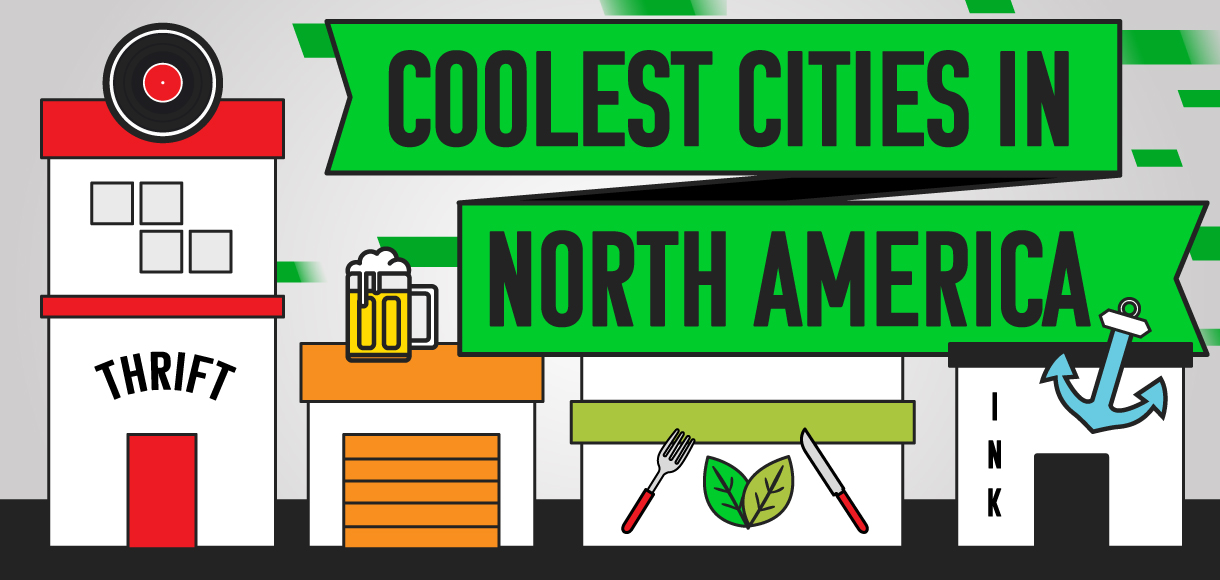What will you eat in 2050?

We delve into trends developing within the dynamic food tech industry to reveal what will be on your plate in 2050.
Concerns around climate change, global population growth and soaring obesity levels will spark a radical overhaul of our eating habits during the next 30 years.

The European Union has officially declared a climate emergency, along with lawmakers in the UK, Japan, Korea, Singapore, New Zealand, Canada, Argentina and various other countries around the world. They have pledged to go carbon neutral by 2050 in a bid to save the planet from disaster.
These climate goals can only be achieved by drastically reducing animal agriculture. Statistics from the Food and Agriculture Organization show that raising livestock for meat, eggs and milk generates 14.5 per cent of global greenhouse gas emissions.
Feeding a growing population
A spiralling global population will only compound the issue. Estimates from the United Nations suggest that there will be 9.7 billion people on the planet by 2050, a 25 per cent increase on the current population. World leaders know they must come up with new ways to feed this growing population.
Tackling the obesity crisis
Not only is animal agriculture polluting the planet, but it is also making us ill. Overconsumption of meat and dairy is significantly increasing the threat of heart disease, cancer and type 2 diabetes.
Worldwide obesity has nearly tripled since 1975, according to the World Health Organization, presenting a public health emergency that runs in tandem with the climate emergency.
The need for solutions is urgent. Innovation within the food tech industry could provide some intriguing resolutions to the twin emergencies plaguing humanity.
Emerging trends in food tech
Research from Betway online casino has identified several key trends that will play out over the next 30 years, fundamentally reshaping our dietary habits forever

The end of animal agriculture
The most drastic change will be the elimination of animal agriculture. Experts say the current system – whereby crops are grown to feed the animals that we eat – is appallingly inefficient, not to mention morally problematic.
By 2050, most of the protein we consume will come from either plant-based sources or lab-cultivated meats. Companies such as Beyond Meat and Impossible Foods are already popularising plant-based meat alternatives around the world. The quality of these products is currently hit and miss, but competition within this sector will spark huge improvements in the years ahead.
Replacing dairy and eggs
Dairy will be phased out, with plant-based alternatives made using oats, soy, hemp and nuts coming to the fore. There is also a scramble for egg alternatives made from plants, with firms like Evo Foods and Eat Just leading the charge.
The rise of lab-grown meat
Lab-grown meat, produced in bioreactors without the slaughter of an animal, has already been approved for sale in Singapore. This trend will accelerate dramatically in the years ahead. Startups including Memphis Meats, Higher Steaks, Mosa Meat, Aleph Farms and Shiok Meats are all racing to dominate this lucrative sector.
Microorganisms take centre stage
Yet that will be just the beginning of the revolution. Greater changes will come from the cultivation of microorganisms such as fungi, bacteria, yeast, seaweed and microalgae.
They can all provide rich protein sources, without the saturated fat that comes with some meat and dairy products. Protein can also be extracted from air and CO2, using renewable energy and a probiotic production process to convert elements into nutrients.
The role of 3D printing
If you’re thinking that all sounds rather grim and joyless, you would be wrong. 3D printing technology will be used to replicate the textures, juicy aesthetics and flavours of the food we all know and love today. This can recreate texture, juiciness, fat distribution, mouthfeel and much more.
The diet of 2050
The goal is to essentially create delicious, nutritious food that can be produced in a carbon neutral manner – and it is no longer a pipe dream.
Some scoff at these developments and simply urge world leaders to steer people towards plant-based diets and even mass consumption of insects to prevent deforestation and save the planet.
A raft of innovation
By 2050, we will all be eating more fruit, vegetables and wholegrains, and a lot less meat, dairy and junk food. Yet some of the plants we eat will look nothing like the plants of today thanks to innovations within microorganism cultivation and 3D printing.
The emergence of personalised nutrition
Alongside this trend, there will be a personalised nutrition revolution, which has the potential to reshape our relationship with food.
Wearable technology will work at a molecular level painlessly assessing our dietary biomarkers. The data it gleans will advise users on dietary modifications that can minimise their risk of conditions such as diabetes and heart disease.
Families sitting around a dinner table could all be eating significantly different meals, depending on their personalised nutritional needs.
The ultimate goal
Obesity should plummet, greenhouse gas emissions from the food industry will be drastically reduced, and the food will increasingly be cultivated and produced by machines powered by AI technology. It’s a brave new world, but it may also prove to be a delicious one.





































